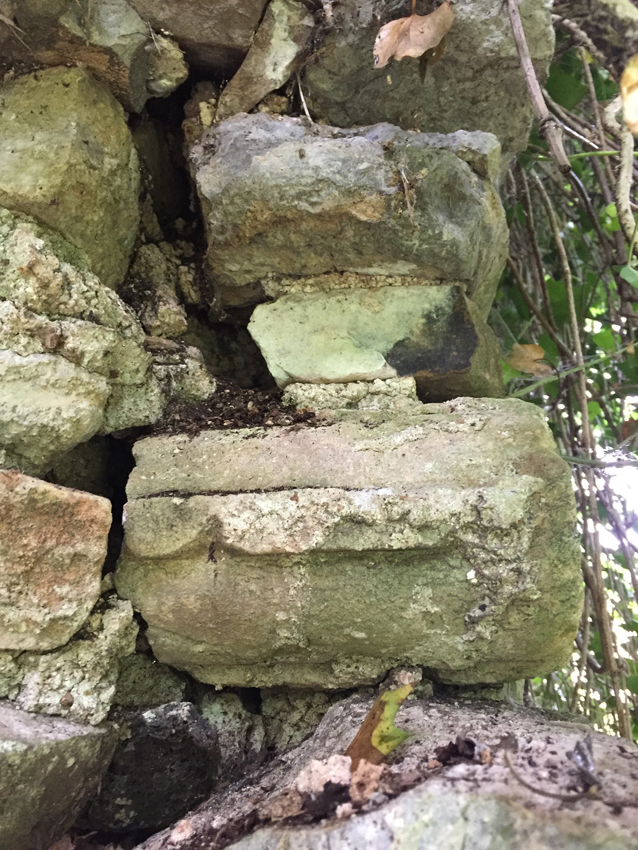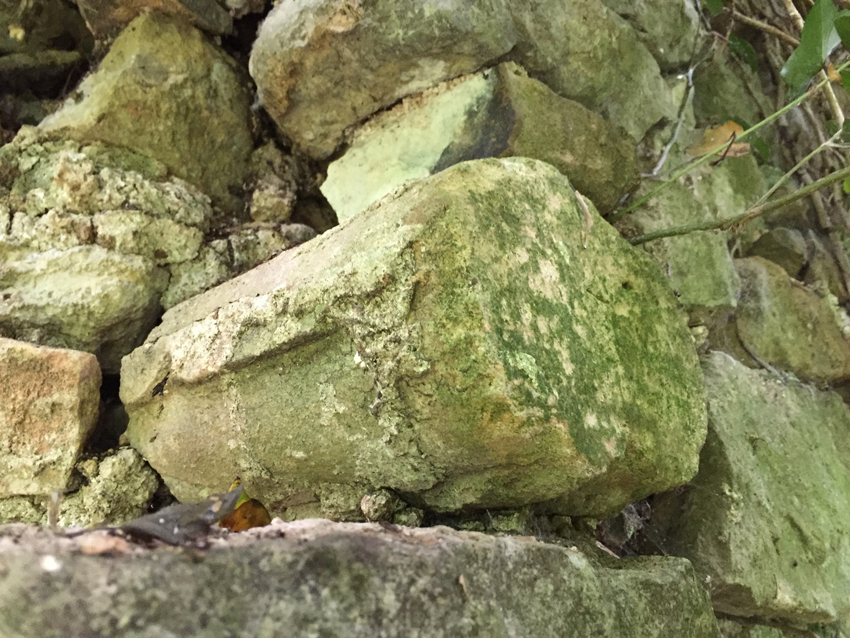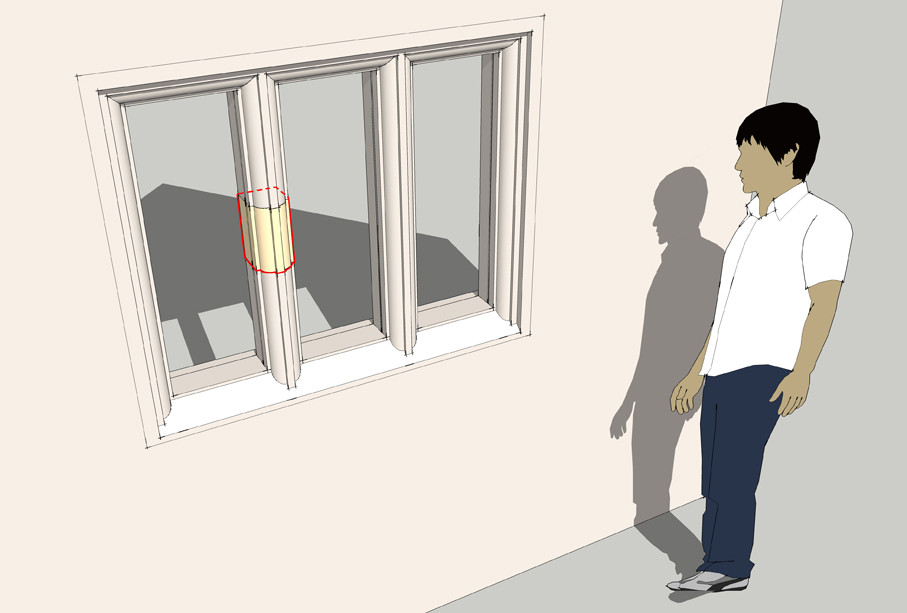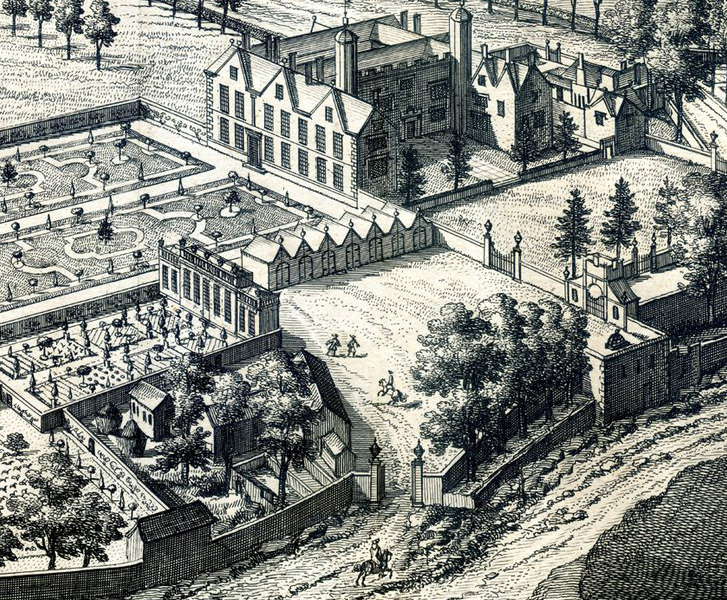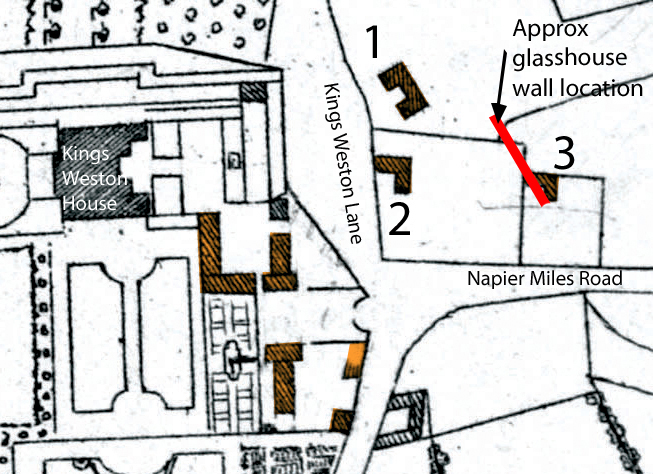As well as uncovering the historic glasshouse wall KWAG’s recent clearance efforts uncovered a fascinating new fragment of the estates history. The discovery of a decorative cut stone fragment, still built into the wall, raises questions about where it came from.
The stone is not in its original location; it’s built into the wall at about eight feet off ground level and with its carved mouldings formerly hidden within the fabric of the wall. This carved surface has now been revealed through the gradual collapse of the wall to the north of it. It measures approximately 7” x 7” x 4” and the stone is not from any of the quarries of the Kings Weston Estate. Instead it’s of the much finer oolitic limestone from quarries at Dundry or perhaps Bath. This finer grade of stone was frequently used for its easily worked qualities on ornamental work.
There are only two faces visible in the present location. The most diagnostic face has ovolo mouldings along its narrowest edge and is clearly set on its side so that its plainer face would have formed a flat surface within the glasshouse, with the ornamental parts deliberately obscured within the wall fabric.
By 1712, when the rebuilding of Kings Weston house and estate buildings were begun, mullion windows would have been anachronistic and ovolo mouldings replaced by new classical details. The mullion is likely to date from a period between the late-Sixteenth to the late-Seventeenth Century, but to be more precise is difficult. It is undoubted that the stone forms part of a window mullion, but from where, and under what circumstances did it end up in its current location?
From estate plans we can date the wall in which it presently resides to about 1770. This was towards the end of a period of major upheaval on the estate, when Edward Southwell III was, once again, remodelling and renewing Kings Weston house and its gardens and service buildings to a grand and new coordinated plan. The stables and walled gardens around the glasshouse are the most substantial evidence of that programme of development.
Southwell sought to lay out the new walled complex to accommodate all the services and kitchen gardens he was removing from their original locations. Originally densely massed around the rear of the house many structures would have pre-dated the mansion designed by Sir John Vanbrugh. Early engravings and estate plans show a series of low-rise structures arrayed around yards, no doubt swept away to expand the ornamental parkland setting.
So with this level of upheaval could the stone have come from one of these out-buildings on the other side of Kings Weston Lane? It is certainly a possibility that the rubble was salvaged and reused in new structures. It would be logical that the glasshouse, an ornamental building built for leisure rather than utility, would have followed the more important kitchen gardens and service blocks which needed to be complete before the old buildings across the lane could be decommissioned. It could then have been erected at a time when the old buildings were being dismantled and material transported the short distance across the lane for reuse.
However, there remain a couple of other possibilities. Although the late Tudor mansion that preceded the current house was demolished sixty years previously it is not inconceivable that material from it was still scattered about and scavenged for new building work, but perhaps the strongest argument can be made for it having been salvaged from buildings closer at hand.
Close to the site of the glasshouse we know that there were at least three properties in existence in 1720 each within its own plot(marked 1-3 on the plan). From a closely contemporary engraving we get a sense that these were good sized buildings, each of two storeys. Building 3 lay almost exactly on the site of the glasshouse, and all of these structures had been erased by the time the walled gardens were begun. There is a strong possibility that fabric could have been reutilised in the new works.
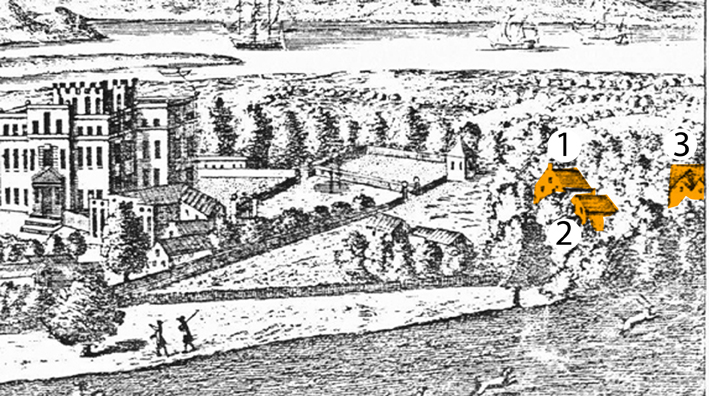
Above: The 1720 estate plan and a near-contemporary engraving showing the buildings demolished for the walled gardens and stables
It is interesting to note the east-west alignment of building 2 on the plan and there is speculation that this structure may have incorporated the medieval chapel of St Thomas that was associated with the earlier manor. Sadly there’s been no recent identification of any medieval material at Kings Weston and the fragment of mullion post-dater the reformation when it was, most likely, abandoned.
The quarter of the walled gardens to the west of the stables, incorporating the remains of the glasshouse wall, may hold significant archaeological interest. Perhaps, in the future, we might be able to identify more of this cluster of earlier buildings, swept away in the Eighteenth Century race for modernity.


